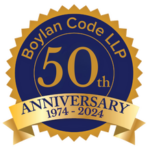In a recent decision rendered in the context of a Union organizing campaign involving Browning Ferris Industries [i], a divided National Labor Relations Board has adopted a greatly expanded standard for determining who is a “joint employer” under the National Labor Relations Act. This decision will have wide-ranging consequences for franchisors, manufacturers and other businesses that depend on leased employees, but particularly in the context of a Union organizing campaign.
The Sanitary Truck Drives and Helpers, Local 350 of the International Brotherhood of Teamsters, was engaged in a Union organizing campaign, seeking to represent the sorters, screen cleaners and housekeepers employed at the Browning-Ferris Industries’ Newby Island Recyclery (BFI). Pursuant to a written contract between the parties, the employees were hired to work at BFI and were paid by a subcontractor, Leadpoint Business Services.
In a decision and direction of election favorable to BFI, the local NLRB regional director determined that BFI’s subcontractor, Leadpoint, was “the sole employer of the petitioned-for employees,” applying NLRB historical precedent in construing joint employer status and stating that for joint employer liability to attach to BFI, BFI must “not only possess the authority to control employee’s terms and conditions of employment, but also exercise that authority.” While BFI arguably possessed the authority to control the employees’ terms and conditions of employment, because Leadpoint, and not BFI, primarily exercised that authority, the regional director determined that BFI was not a joint-employer for purposes of the Union organizing campaign and the Union appealed.
In accord with the activist stance taken by the NLRB’s general counsel in recent years, expanding the reach of the National Labor Relations Act, the NLRB applied a new, “revised” standard in determining joint-employer status, reversing the regional director and determining that BFI was indeed a joint employer with Leadpoint and a proper subject of the Union organizing campaign. In rendering its decision, the NLRB utilized a more restrictive standard to determine joint-employer liability, reverting to a standard that was first articulated over thirty years ago in a 1982 decision by the United States Court of Appeals for the Third Circuit,NLRB v. Browning Ferris Industries of Pennsylvania, Inc., 691 F.2d1117 (3d Cir. 192) enfg. 259 NLRB 148 (1981), in a case coincidentally also concerning Browning Ferris Industries.
In its most recent decision against BFI reversing the regional director, the NLRB stated:
“Having carefully considered the record and the briefs, we have decided to revisit and revise the Board’s joint-employer standard, Our aim today is to put the Board’s joint employer standard on a clearer and stronger analytical foundation, and within the limits set out by the National Labor Relations Act, to best serve the Federal policy of ‘encouraging the practice and procedure of collective bargaining.’
Today, we restate the Board’s joint-employer standard to reaffirm the standard articulated by the Third Circuit in its Browning Ferris decision. Under this standard, the Board may find that two or more statutory employers are joint employers of the same statutory employees if they ‘share or codetermine those matters governing the essential terms and conditions of employment.’ In determining whether a putative joint employer meets this standard, the initial inquiry is whether there is a common law employment relationship with the employees in question. If this common law relationship exists, the inquiry then turns to whether the putative joint employer possesses sufficient control over employee’s essential terms and conditions of employment to permit meaningful collective bargaining.
Central to both of these inquiries is the existence, extent and objective of the putative joint employer’s control. Consistent with earlier Board decisions, as well as the common law, we will examine how control is manifested in a particular employment relationship. We reject those limiting requirements that the Board has imposed – without foundation in the statute or the common law- after Browning-Ferris. We will no longer require that a joint employer not only possess the authority to control employees’ terms and conditions of employment, but also exercise that authority. … [T]he queston is whether one statutory employer ‘possesse[s] sufficient control over the work of the employees to qualify as a joint employer with’ another employer. Nor will we require that, to be relevant to the joint-employer inquiry, a statutory employer’s control must be exercised directly and immediately. If otherwise sufficient, control exercised indirectly – such as through an intermediary – may establish joint-employer status.” [Emphases added; citations omitted]
The mere exercise of control, indirectly, through a subcontractor-intermediary such as Leadpoint is apparently enough to create joint-employer status under the NLRB’s ruling. In support of its determination, the NLRB criticized prior NLRB decisions that “narrowed” the definition of joint-employer status under the Act, while noting that “the diversity of workplace arrangements in today’s economy has significantly expanded,” citing the most recent Bureau of Labor Statistics 2005 survey which indicated that “contingent workers accounted for as much as 4.1 percent of all employment, or 5.7 million workers.”
Likewise, the decision noted that “employment in the temporary help services industry, a subset of contingent workers employed through temporary agencies, ha[s] climbed to a new high of 2.87 million workers, a 2 percent share of the nation’s workforce as of August 2014.”
The NLRB also clearly stated that the determination of joint-employer status will be an intensive, fact specific inquiry made on “a case by case” basis. However, this decision has been criticized, as no clear guidelines for making this determination have been articulated, raising concerns for employers interested in attempting compliance with the new standard.
While this decision is good news for Union organizing campaigns, it is bad news for employee staffing agencies and their primary customers, non-union employers.
It is expected that the case will be appealed, to the Supreme Court if necessary. In the meantime, business trade groups are expected to seek a legislative solution to the ever-expanding reach of the National Labor Relations Act as interpreted by the NLRB’s activist board members.
[i] Browning Ferris Industries of California, Inc. d/b/a BFI Newby Island Recyclery and FRP-II, LLC, d/b/a Leadpoint Buisness Services and Sanitary Truck Drivers and Helpers, Local 350, International Brotherhood of Teamsters, Case No. 32-RC-109684, 362 NLRB No. 186, Aug. 27, 2015; see also, McDonald’s USA, LLC et al and Fast Food Workers Committee and Service Employees International Union, 362 NLRB No. 168, Aug. 14, 2015.


